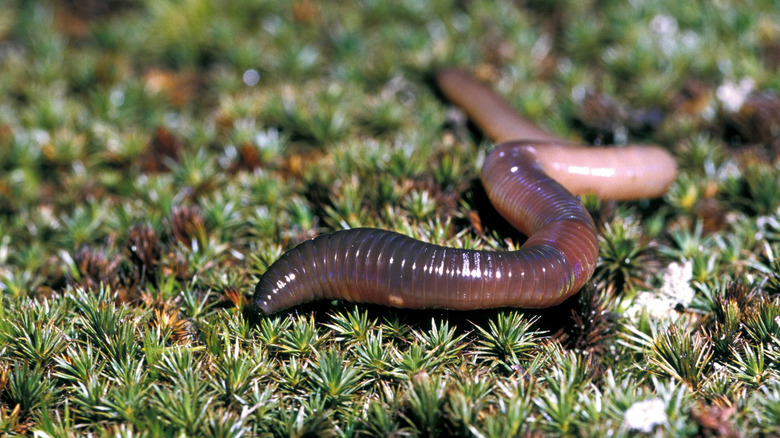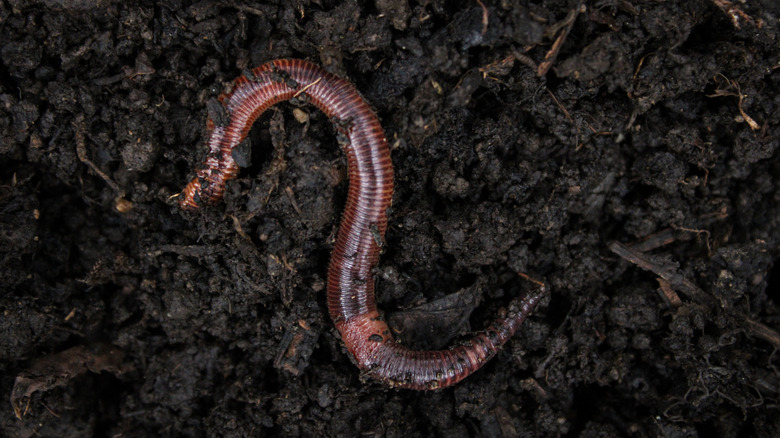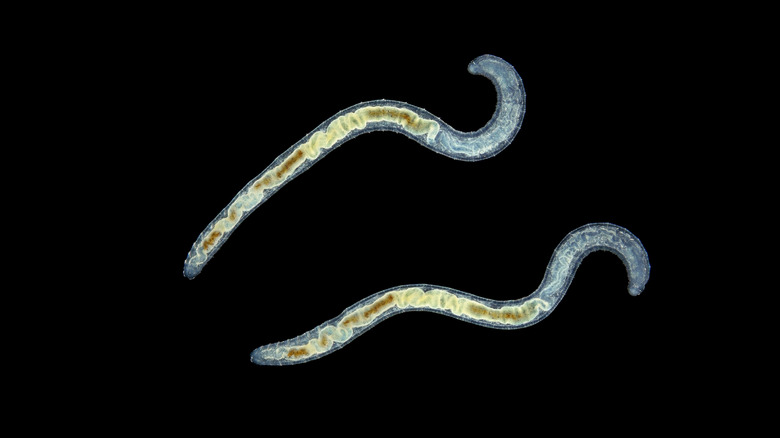Why A Worm Regrows After It Gets Cut In Half
Earthworms are famous for their ability to regrow if they get cut in half, although this can only occur under certain conditions. The secret to a worm's regenerative powers lies in stem cells. Stem cells are like blank slates; on their own, they do not perform any specific function, but they can develop into hundreds of different specialized cells, and every cell in an organism's body begins as a stem cell. For many worms, an extreme injury, such as being severed with a garden spade, will trigger stem cells to form a replacement for the lost portion of the body.
You might have heard that cutting an earthworm in half will produce two worms, but this only happens in certain species. There are over 1,800 different species of earthworm, and while most can grow a new tail from a severed head, only a few can grow a head from a severed tail. Take for instance the common earthworm (Lumbricus terrestris), aka the nightcrawler, and the swamp-dwelling blackworm (Lumbricus variegatus). Although earthworms and blackworms have a lot in common, only the blackworm can grow a new head. That's not the only factor affecting a worm's ability to regenerate itself. There are also limits to how much of themselves they can regrow and which organs their stem cells can recreate, which can lead to some interesting complications.
Other factors affecting regrowth
Regrowth also depends on the location of the cut. A key earthworm characteristic is the segmented body, with most worms having 100-200 segments. The brain and heart are located in the first eight segments, and only certain worm species can regrow the full eight if lost. A blackworm can regrow all of its head segments, no matter how many are cut off, but the red wiggler (Eisenia fetida), a popular composting worm, can usually only regrow a few.
The worm's reproductive organs are located between the 10th and 13th segments. For a common earthworm, losing these segments is no problem; they can regrow their testes and ovaries. Red wigglers, on the other hand, cannot replace their sexual organs if they get cut off, leaving them incapable of reproduction.
If the worm is severed anywhere after its 23rd body segment, the head will regrow a tail, but the tail will be unlikely to grow a new head. In a bizarre twist, the stem cells around the injury site may actually form into a new tail, leaving a worm with two tails and no head. Lacking a mouth or brain, it can survive for a short time by absorbing oxygen from the soil, but it will eventually starve. Meanwhile, worm heads severed below the 20th segment can regrow tails, but their intestines often grow back improperly. This can potentially lead the worm to the grim fate of death by constipation.
The worms that reproduce by severing themselves
Most worms can regrow a portion of their body if they get cut in half in a gardening accident, but some species split themselves in twain on their own. Blackworms respond to changes in temperature by splitting between the first and second third of their bodies. The heads grow new tails while the tails grow new heads, complete with reproductive organs.
Some worms split and regrow themselves as a means of reproduction. Enchytraeus fragmentosus and Encytraeus japonensis, two species of very small white earthworms, reproduce by fracturing into pieces, which then grow both a new head and new tail. These worms can also regrow if they are severed by an injury, but if that happens, the head fragment may erroneously grow a second head instead of a tail, creating what biologists refer to as a bipolar worm.
Although earthworms are what typically comes to mind when we think of worms, there are some aquatic worm species with even more impressive regenerative capabilities. Schmidtea mediterranea, a type of freshwater flatworm belonging to the group known as planarians, has attracted great scientific interest due to its ability to regrow any body part if lost. Researchers have found that these worms have remarkably adaptable stem cells. In humans, once a stem cell starts down its specialized route, it can no longer be changed, but in Schmidtea mediterranea, a single stem cell can divide to form brain cells, skin cells, stomach cells, and anything else that might be needed.


